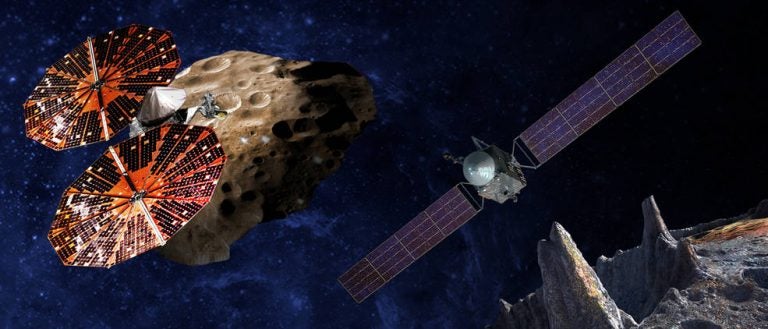University of Central Florida Physics Professor Dan Britt will help explore some of the oldest asteroids in the solar system thanks to a new NASA mission.
NASA, this month selected the Lucy mission, which will explore Jupiter’s Trojan asteroids for the first-time. The robotic spacecraft will also explore a larger asteroid within the asteroid belt. Scientists said they believe the Trojan belt is home to some of the oldest remnants of the solar system.
Information gleaned from this mission is expected to help mankind understand the formation of planets and the solar system. That’s why the team named its project Lucy – after the female skeleton fossil discovered in 1974, which changed the understanding of human origins on Earth.
The Southwest Research Institute in Boulder, Colo., will lead the mission, and Britt is serving on its science team and leading one of its Science Working Groups. Britt, director of the Center for Lunar & Asteroid Surface Science at UCF , will provide his expertise in physical properties of asteroids and their geology.
“It should be a lot of fun,” Britt said. “This mission has six flybys of the asteroids because of its trajectory and it has relatively low risks. Given the information we will be able to collect, it is quite an attractive mission.”
Several of the Lucy members are veterans from the New Horizons mission that helped shed new light on Pluto. Lucy is expected to launch from Kennedy Space Center in 2021.
“Because the Trojans are remnants of the primordial material that formed the outer planets, they hold vital clues to deciphering the history of the solar system,” said principal investigator Harold Levison. “Lucy, like the human fossil for which it is named, will revolutionize the understanding of our origins.”
Lucy is part of NASA’s Discovery Program. The Discovery Program was created in 1992 to sponsor frequent, cost-capped solar system exploration missions ($450 million) with highly focused scientific goals. Past missions include MESSENGER, Dawn, Stardust, Deep Impact, Genesis and GRAIL.
